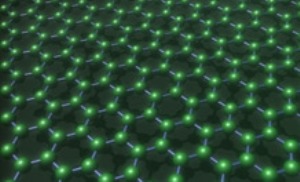Apr 20 2013
Smart electronics are taking the world by storm. From techno-textiles to transparent electronic displays, the world of intelligent technology is growing fast and a revolutionary new device has just been added to its ranks.
 Graphene and graphExeter have been used to create a novel photoelectric device.
Graphene and graphExeter have been used to create a novel photoelectric device.
Researchers at the University of Exeter have developed a new photoelectric device that is both flexible and transparent. The device, described in a paper in the journal ACS Nano, converts light into electrical signals by exploiting the unique properties of the recently discovered materials graphene and graphExeter. GraphExeter is the best known room temperature transparent conductor and graphene is the thinnest conductive material.
At just a few atoms thick, the newly developed photoelectric device is ultra-lightweight. This, along with the flexibility of its constituent graphene materials, makes it perfect for incorporating into clothing. Such devices could be used to develop photovoltaic textiles enabling clothes to act as solar panels and charge mobile phones while they are being worn.
Photosensitive materials and devices such as the one developed at Exeter can, in the future, also be used for intelligent windows that are able to harvest electricity and display images while remaining transparent. Smart materials have almost unlimited potential applications from integral iPods and keyboards in clothing to electronic displays on glasses and goggles.
Saverio Russo, Professor of Physics at the University of Exeter said: "This new flexible and transparent photosensitive device uses graphene and graphExeter to convert light into electrical signals with efficiency comparable to that found in opaque devices based on graphene and metals.
"We are only just starting to explore the interfaces between different materials at very small scales and, as this research shows, we are revealing unique properties that we never knew existed. Who knows what surprises are just around the corner."
Metallic nanostructures in smart materials typically cause a haze that prevents them from being truly transparent. The photosensitive device developed at Exeter contains no metals and is therefore completely transparent but, as it can detect light from across the whole visible light spectrum, it is as efficient at sensing light as other recently developed opaque photoelectric devices.
Source: http://www.exeter.ac.uk/